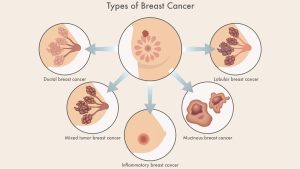The student years are in the budding state of adolescence, when a person undergoes drastic physical and psychological changes. If psychological problems are encountered at this stage and not solved properly, they may affect a series of future developments, and the age that should be free of worries will be overshadowed from then on. A variety of mental health surveys have shown that psychological problems are still prevalent among primary and secondary school students, so the reporter has selected the 10 most common psychological problems among adolescents, hoping that adolescents with psychological problems should be diagnosed and treated early.
1. Learning Disability
Learning disability refers to the phenomenon of normal intelligence, but low achievement due to backward learning ability. Studies show that about 5-10% of school children belong to children with learning disabilities. Learning disabilities are made up of several different types, including dysgraphia, dyslexia, and dyscalculia (also called nonverbal learning disabilities).
2. Test anxiety
Test anxiety refers to the physical or psychological tension caused by the test. The physiological nervousness is such as rapid heartbeat, shortness of breath, confusion or blankness in the mind, etc. The psychological nervousness is mostly in the form of worry, such as worrying that you will not be able to write a lot of questions in the test, or worrying that you will be scolded by your parents if you do badly in the test.
3. School phobia
“School phobia” is a more serious child psychological disorder, mostly seen in elementary school students between the ages of 7-12. Because students are afraid of school, with the fear of psychology, also known as school phobia. The common manifestations are that the child is afraid of going to school, even openly refuses to go to school, feels reluctant and unhappy when going to school, does not go to school when he/she should or puts forward harsh conditions, once he/she arrives at school he/she excuses himself/herself to go home, or complains of headache, dizziness, abdominal pain, vomiting and other discomforts early in the morning on the day of school or the night before, and the above symptoms do not appear on holidays.
4. Obsessive Compulsive Disorder (OCD)
OCD is a mental illness in which ritualistic behaviors are used to reduce internal anxiety, and the patient develops lingering thoughts and behaviors that have to be done. The main manifestation is obsessive thinking or compulsive behavior. Compulsive thinking refers to certain thoughts, impulses, and emotions that appear repeatedly in the mind of the patient, which the patient recognizes as unnecessary and would like to get rid of, but cannot, and is therefore very distressing.
5. Depression
Depression is a psychiatric disorder characterized by abnormally low mood as the main clinical manifestation of disinterest, powerlessness, hopelessness, incompetence and helplessness. Symptoms include: extreme sadness, despair, fatigue, and physical illness. The degree and nature of depression in people with depression far exceeds the limits of normal variation, unlike the various worries of daily life that can easily and gradually “dissipate”.
6. Schizophrenia
Schizophrenia is a serious mental illness that most often occurs between the ages of 15 and 20. The main symptoms include disorders of thinking, emotions, behavior and other aspects. At the onset of the disorder, patients may experience a decline in grades or work performance, social withdrawal, poor personal hygiene habits, etc. During the incubation period, if not treated appropriately, the disorder may worsen and lead to symptoms such as hallucinations, delusions, incoherent speech, and bizarre behavior.
7. Body image worries
Body image worry is a kind of psychosexual disorder, usually appear in the adolescent development period. At this time to face the sudden appearance of gender differences, adolescents often lack adequate psychological preparation. They will involuntarily compare themselves with others, and once there is a large gap, some of them will have body image trouble.
8. frustrated in love
Adolescent children tend to be more sensitive, at this time some small things can easily trigger psychological problems, such as love frustration, body image troubles are such.
9. Blurred gender roles
Gender role ambiguity refers to the misalignment of an individual’s identification with his or her gender role. Generally speaking, children begin to gradually form the concept of gender roles from about the age of three. If a young boy sees himself as a person like the girls around him and tries to imitate women in dress, expression and behavior, he becomes a feminized boy, and vice versa.
10. Social phobia
People suffering from social phobia often experience significant and persistent worry or fear that they will face embarrassment or shame when speaking in the face of unfamiliar people, exercising under the gaze of people, or interacting with the opposite sex. Patients generally adopt avoidance behaviors for the feared environment, and even if they persist, they are very distressed and often experience anxiety, excessive sweating, and flushing.





More Stories
How to relieve psychological anxiety?
What are the psychological barriers that affect the health of the elderly
7 symptoms suggest that you are too much stress